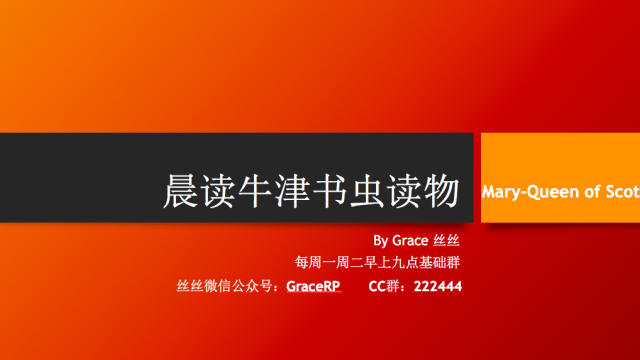對移動學習認識的新飛躍
2013-03-07 15:15
Mobile Learning has been on the horizon for a long time but has met with scepticism and technical constraints in its early days. Now, even though bandwidths have improved and devices have become more capable, mobile learning is still struggling to take off. The recently released Towards Maturity report ‘Mobile Learning at Work’ indicates that only 30% of organisations are incorporating mobile learning. Interestingly, these statistics are only marginally better than those reported by ASTD for the US market in May 2012. So what ails mobile learning?
移動學習已經存在了很長一段時間,但在初期曾遭受懷疑,受到技術限制。現(xiàn)在,即使帶寬有所改善且設備也變得更強大,移動學習仍在奮力騰飛。最近發(fā)布在《邁向成熟》的一篇名為《工作中的移動學習》的報告顯示,目前只有30%的機構運用移動學習。有趣的是,這些數(shù)據(jù)僅僅稍微好于ASTD 2012年5月在美國市場的報告。所以,到底什么阻礙了移動學習呢?
Understanding Mobile
了解移動學習
The most important reason for the low uptake of mobile learning, until now, has been the lack of understanding of mobile devices and mobile learning. To truly appreciate mobile learning, it is crucial to understand, what I call, the 3 key principles of mobile learning.
到現(xiàn)在為止,移動學習利用率不高最重要的原因是缺乏對移動設備和移動學習的正確理解。為了真正認識移動學習,這了解我所說的移動學習的3個關鍵原則至關重要。
It is much more than ‘Learning’
不僅僅是“學習”
The term ‘mobile learning’ is its own biggest enemy. Invariably, it forces you to focus on how to deliver learning on mobile devices. ‘Mobile’ is a unique device that brings together the capabilities of numerous disparate devices – like a phone, a camera, an audio/ video player & recorder, a computer, eBook reader, a GPS device, a game console – all in the palm of your hand. Today’s mobile devices move beyond merely providing access but to actively helping and supporting us at work and at home. It has also empowered and enabled us to do things that we may never have had the confidence to do in the past.
“移動學習” 這一術語是它自己最大的敵人。它迫使你把重點放在如何在移動設備上提供學習。手機是一種特殊的設備,它包括許多不同的設備,比如電話、攝像頭、音頻或視頻播放機和錄像機、電腦、電子書閱讀器、GPS設備、游戲機等所有能在掌上使用的設備。如今移動設備不僅僅提供鏈接訪問,而且在工作和生活中積極幫助并支持我們。它還使我們能夠做一些之前可能沒有信心做的事。
If we stay within the comfort of the “l(fā)earning box”, we will never fully recognise or realise the true value and potential of adopting “mobile” solutions.
如果我們滿足于“學習工具”這一項定義,我們將永遠不會完全認識到或實現(xiàn)采取“移動”解決方案的真正價值。
Think augmentation
增強
One of the common mistakes organisations make when considering mobile learning is ‘shifting their existing eLearning to all types of mobile devices’. This is like the mad rush to convert all ILT training to eLearning that we witnessed a decade ago. Only to discover years later that a lot of eLearning didn’t work as we thought it would.
企業(yè)在考慮移動學習時最容易犯的一個錯誤就是“把他們現(xiàn)有的在線學習資料移動到各類設備上?!边@簡直像十年前我們??見到的瘋狂地將所有ILT培訓搬到網上。然而幾年后我們發(fā)現(xiàn),許多在線學習并不是我們想像的那樣。
With mobile, ‘augmentation’ should be the key theme. Clark Quinn in his book’ Designing mLearning: Tapping into the Mobile Revolution for Organisational Performance’, says “…mLearning should be viewed as augmenting your learning or performance…”, which, for me, captures the soul of mobile learning.
對于“移動學習”,“增強”應該是關鍵。Clark Quinn在《設計移動學習:將移動革命引入組織業(yè)績》這本書中寫道:進軍移動電話的革命組織性能”說,“......移動學習應被視為學習或績效的增強......”,在我看來,這句話抓住了移動學習的核心關鍵。
Context in the real king
語境中真正的王者
We normally use mobiles in short bursts of 1-2 minutes and in environments as varied as being on the Tube, on a plane with no connectivity, or inside a high decibel manufacturing facility. The context, then, in which we ‘the learners,’ use mobile learning is critical and a key element in designing meaningful mLearning.
移動學習環(huán)境很廣泛,我們一般在地鐵上、飛機上或分貝高的制造廠等沒有網絡連接的時候運用手機移動設備學習1至2分鐘。我們“學習者”運用移動學習的這種環(huán)境是設計有意義的移動學習的一個關鍵因素。
No escaping mobile learning
不要逃避移動學習
To be fair, understanding mobile learning is a bit difficult, especially for organisations with a ‘push learning’ mindset. Further, particularly in past, there have been challenges of small screen sizes, low bandwidths, low penetration of smart devices, security of content, Flash vs. HTML5 confusion, native vs. web based options, and more. Honestly, most of these are myths; myths with a logical and convincing argument against them. What’s important is to realize that there is no escaping mobile learning. Here’s why: we live in a mobile world, which is changing the very nature of work, and together these present a fantastic opportunity to transform workplace learning. I elaborate on each of these below.
憑良心說,理??解移動學習是有點困難的,特別是對那些打算“推進學習”的組織。此外,特別是在過去,有來自智能手機屏幕小、帶寬低、滲透低的挑戰(zhàn),還有內容安全,F(xiàn)lash和HTML5混亂,本地與基于網絡的選項以及更多的挑戰(zhàn)。說實話,這些大都不實際。最重要的是認識到不應該逃避移動學習。這是因為:我們生活在一個移動的世界,這改變著工作的本質,同時目前這是一個絕佳的轉變工作場所學習的機會。我在下文一一闡述。
We live in an increasingly mobile world.
我們生活在一個日益移動世界
Smartphone sales have overtaken PC sales in the US and the trend is similar everywhere too, soon tablets will do the same, and before we know it, PC sales will be dwarfed by that of mobile devices. Further, smart phones and tablets are becoming cheaper – some have already reached a £50 price point and in a year or two, almost all of your workforce will own one (if they don’t already) for their personal use.
在美國,智能手機銷量已經超過了個人電腦銷售量,而且其他地方有同樣的趨勢,并且平板電腦也將如此。在我們見證平板電腦時代之前,個人電腦銷售量與智能手機銷售量相比就相形見絀。此外,智能手機和平板電腦越來越便宜,有的已經達到了50英鎊,并且在一到兩年內,幾乎您所有的員工都將自己的(如果他們現(xiàn)在還沒有的話)自己的智能手機或平板電腦。
Intel futurist, Rob Johnson, in an article earlier this year, writes, “As we pass 2020, the size of meaningful computational power approaches zero. When you get intelligence that small, you can turn anything into a computer,” Johnson writes. “All of a sudden, it’s possible to turn your shirt, your chair, even your own body into a computer.” I think this will have a huge impact on learning as an era of embedded ubiquitous learning unfolds.
英特爾未來學家Rob Johnson在今年早些時候的一篇文章中寫道:“到2020年,有意義的計算能力設備的尺寸大小趨近于零。如果你有那么小的設備,你可以把任何東西裝到計算機里?!薄巴蝗婚g,你可以把你的襯衣、椅子、甚至是你自己的身體裝進電腦?!蔽艺J為,隨著嵌入式的泛在學習時代的到來,這將對學習產生巨大的影響。
There is no doubt that computing is shifting to mobile devices and it’s only natural for learning to follow suit.
毫無疑問,計算機轉移到移動設備,學習很自然的會隨之也將轉移。
Work is changing
工作在改變
Over that last few decades, the concept of work has changed. With the advent of computers and Internet, work is increasingly knowledge-based and for many it’s no longer a place you go to.
在過去的幾十年里,工作的概念發(fā)生了變化。隨著電腦和互聯(lián)網的出現(xiàn),工作越來越以知識為基礎,對于許多人來說不再是去一個地方上班。
The workforce is now more mobile than ever – IDC estimates 37% of world workforce will be mobile by 2015. To manage and support the new workplace and mobile workforce, ‘enterprise mobility solutions’ is a rapidly evolving trend in driving productivity.
現(xiàn)在的勞動力比以往任何時候都更具移動性,IDC估計,到2015年,世界上37%的員工將具非常移動性。為了管理、支持新的工作場所和移動的員工隊伍,“企業(yè)移動解決方案”逐漸成為促進生產力迅速發(fā)展的趨勢。
Research by Dr. Robert Kelley, at the Carnegie Mellon University, indicates that the amount of information one needs to memorise to get the tasks completed has dropped from 75% to 10% between 1986 and 2006. This hints at the declining importance of formal structured training programs, which aim at ‘pushing’ information into the learner’s minds. More and more of learning is now embedded in the workflow.
內基梅隆大學Robert Kelley博士的研究表明,人們需要記憶來完成任務的信息量從1986年從75%下降至2006年的10%。這意味著正式的旨在“把信息塞進學習者的大腦中的”結構化培訓的重要性不斷下降。越來越多的學習現(xiàn)在已融入到工作流程中。
The opportunity
機會
Mobile presents a transformation opportunity for workplace learning.
手機為工作場所學習提供了一個轉換的機會。
Of the five moments of learning needs listed by Gottfredson, the latter three – when trying to remember, when things change, and when something goes wrong – are more pertinent to the workplace. It is in these moments that the staff applies knowledge and skills to do the job. Any learning that can help it is immediately effective. And mobile, being always on and always carried, is the ideal device to target for such performance support.
在Gottfredson列出5種學習需求的時刻,后三個(當想要記住某些事情,當事情發(fā)生變化,當問題出現(xiàn)的時候)與工作場所更有相關性。員工正是在這些時刻需要相關知識和技能來進行工作。任何能夠有所幫助的學習都會立即生效。而隨身攜帶的手機是支持這種學習的理想目標。
As mentioned earlier, mobile is unique as it combines many distinct capabilities. It is also a very personal device (may not be so true for tablets) and is available at the moment of “creative impulse”. If you could capture that moment for further reflection or share with colleagues to build on it further, that’s a phenomenal opportunity. Imagine creating a digital water-cooler for your enterprise where your staffs come to chatter. It’s your informal & social learning hub if you like. It helps bring continuous learning in your enterprise. To me that is a transformational opportunity which mobile presents.
正如前面提到的,手機非常特殊是因為它結合了許多不同的功能。同時它也是一種個人設備(平板電腦可能不是),在人們有“創(chuàng)作沖動??”的那一刻能夠利用。如果你能抓住這一瞬間作進一步的思考,或與同事共同進一步探討,這是一個不錯的機會。想象一下,在員工閑談的地方創(chuàng)建一個數(shù)字??水冷卻器。如果你愿意,這可以是你的非正式學習和社會學習中心。它可以為你的企業(yè)帶來持續(xù)的學習。對我來說,這是移動帶來的變革機會。
Thus, with our computing habits, work culture and even our daily life inclining more towards a mobile world, I do not see any way by which anyone could escape from adopting mLearning for very long.
因此,隨著我們的計算習慣、工作文化、甚至我們的日常生活越來越傾斜向移動世界,任何人不管以哪種方式都不能長時間逃避移動學習。
Just do it!
放手去做吧!
Once we realise the transformational opportunity mobile presents, it’s easier to get started. The challenge, however, with trying to create a comprehensive strategy before you get started is that mobile strategy is a moving target. You can’t wait till things settle down – as they won’t. Start small but do make a beginning. The strategy can simultaneously fall in place as you gain some insights into how it works in your enterprise. Here are some simple options to get you started:
一旦我們認識到移動帶來的轉型機會,開始移動學習就很容易了。然而,在正式開始之前,創(chuàng)建全面的移動學習策略的挑戰(zhàn)是移動學習策略是一個不斷變化的目標。你不能等到所有事情都塵埃落定,因為這一刻不會到來。從小事做起,但一定要開始。當你發(fā)現(xiàn)它如何在你的單位內發(fā)揮作用的時候,這個策略就開始落實到位了。這里有一些簡單的做法幫助你開始:
mEnable your eLearning
使你的在線教學移動化
Many organisations who have done eLearning in the past have first converted their existing content to make it tablet compatible. Not a bad move, unless you plan to put the same eLearning onto mobile phones too. Technically, this tablet learning lies in between eLearning and mLearning. And, if done well, delivering eLearning on tablets could help get you started with mobile learning.
許多過去實施在線學習的機構開始把他們現(xiàn)存的內容轉換為平板電腦兼容的格式。不錯,除非你打算把相同的在線學習內容轉移到手機上。從技術上講,平板電腦學習處于在線學習和移動學習之間。如果干得好,在平板電腦進行在線學習可以幫助你開始使用移動學習。
Support portal for sales (Field Force)
支持銷售門戶網站(場力)
Field based staff are the most mobile and need to be kept updated with, for example, the latest information, new developments, changes to operating processes and policies and any other materials, resources and communication that could help and support them in their day-to-day work. A mobile optimised website designed exclusively to cater to these needs could be a great first project – and it is not restricted to learning.
現(xiàn)場工作人員的移動性最大而且需要不斷更新知識,如最新的信息、新的發(fā)展、操作流程和政策的改變以及其他能夠幫助并支持他們日常工作的材料、資源和溝通。一個專門設計的滿足這些需求的移動優(yōu)化網站可以作為第一個項目,它并非只限于學習。
Custom app for a specific task
特定內容的應用程序
Survey your operations teams to identify any support opportunity that can be provided using mobile devices. It could be creating checklists to increase safety compliance or a custom calculator to help process certain tasks faster.
調查你的運營團隊,確定可以用移動設備的情況??梢允莿?chuàng)建清單來增加安全標準或自定義計算器,幫助某些工作進行的更快。
I’m sure you can think of many more such simple options.
我敢肯定,你能想到很多這樣簡單的選擇。
Although mobile learning is a seemingly complex learning technology, given its newness and rapidly evolving nature, avoiding it is not a choice anymore; especially for organisations that wish to bolster their employees’ performance and progress in midst of tough competition. While the possibilities in mLearning and the domain per se will continue to evolve, it is important that organisations initiate mLearning. And to get past all the scepticism and mundane objections, a leap of faith is needed to get you started.
雖然移動學習是一種看似復雜的學習技術,由于其新穎性和快速發(fā)展的本質,回避不能再作為你的選擇,特別是在激烈的競爭市場那些期望改善員工的表現(xiàn)促進員工進步的公司。隨著移動學習及移動學習領域本身的繼續(xù)發(fā)展,企業(yè)進行移動學習非常重要。不去在意所有的懷疑及世俗的反對,你的信仰需要質的飛躍來開始移動學習。
Go ahead, just do it!
去吧,放手去做吧!
- 相關熱點:
- 互聯(lián)網教育
- 商務英語











